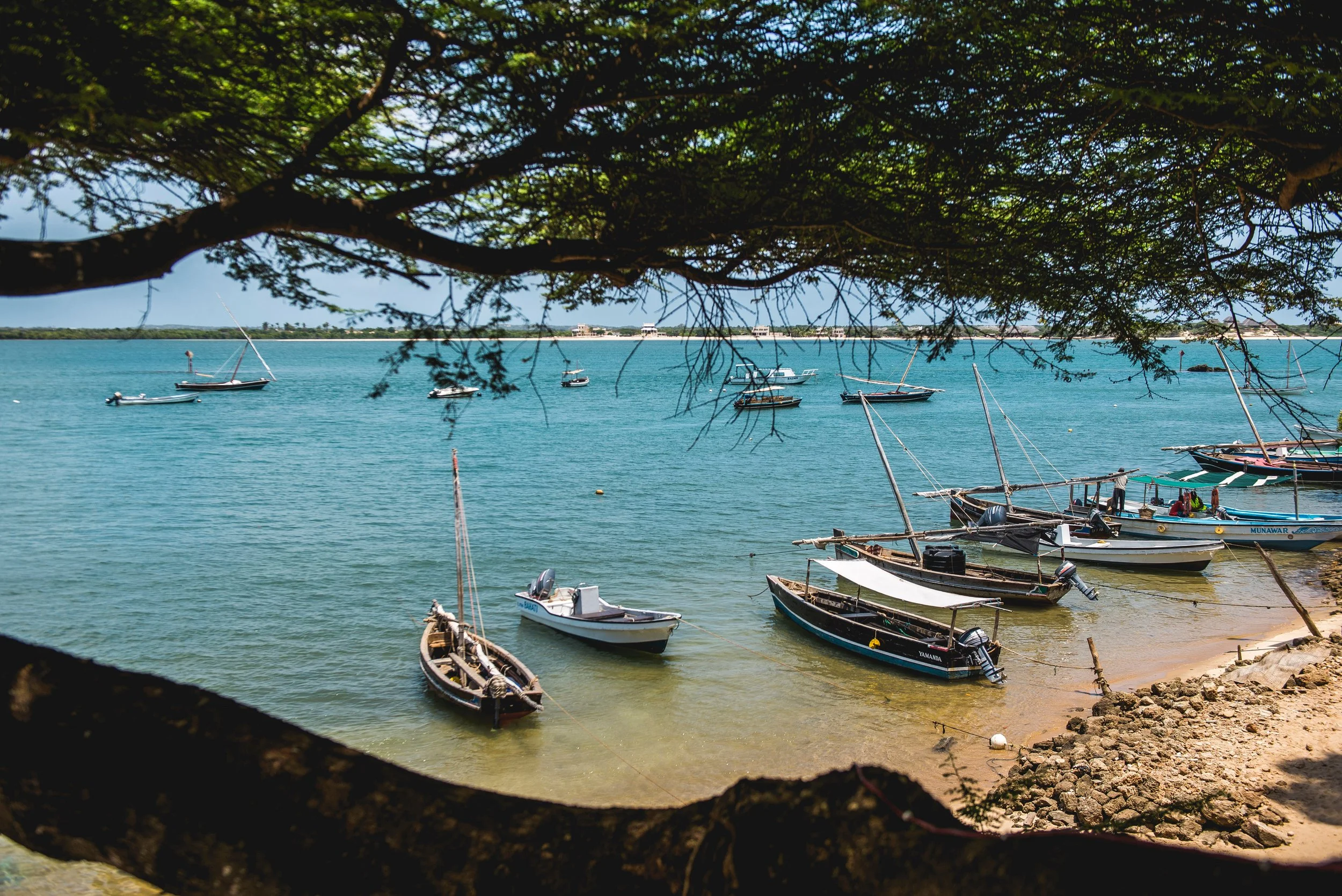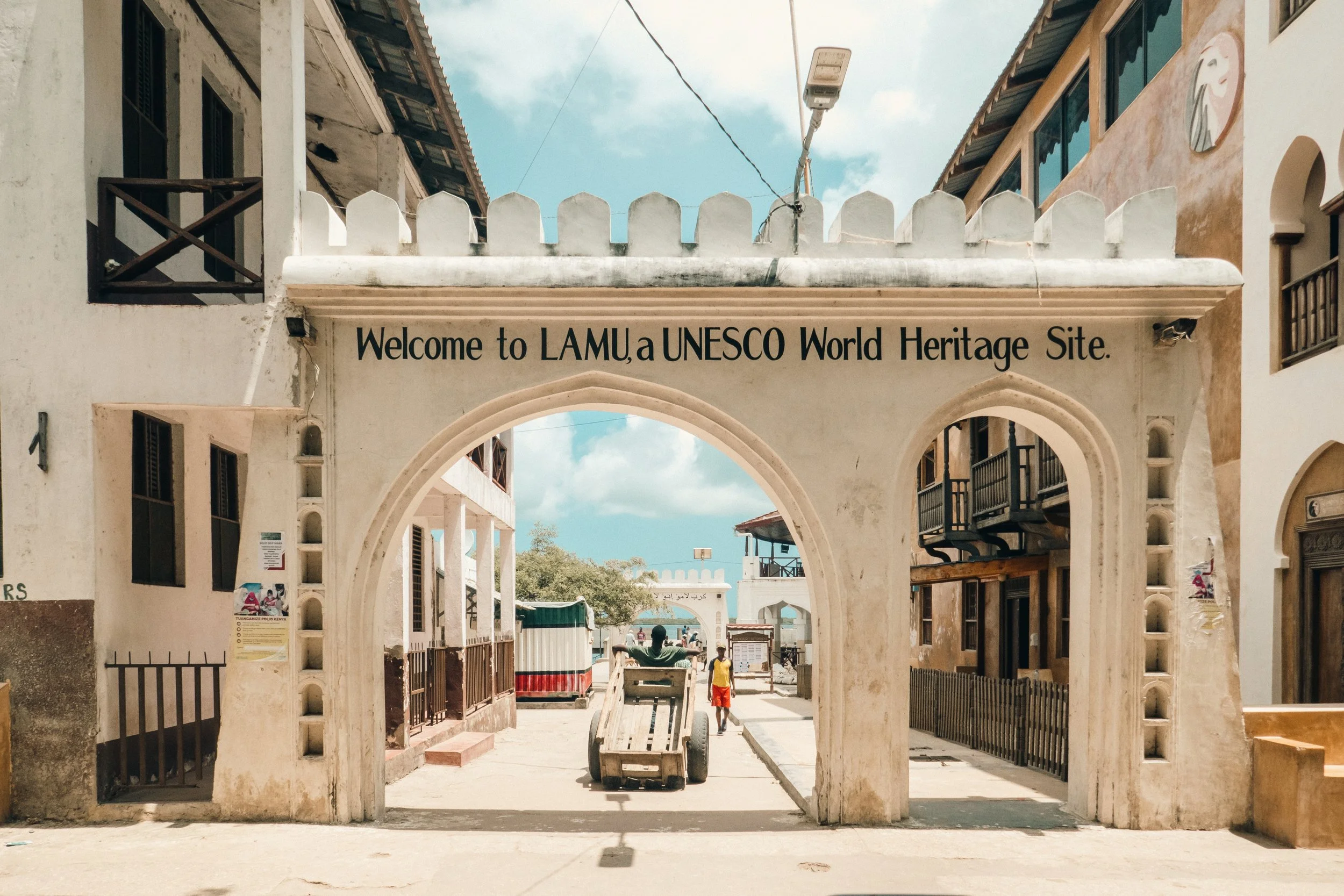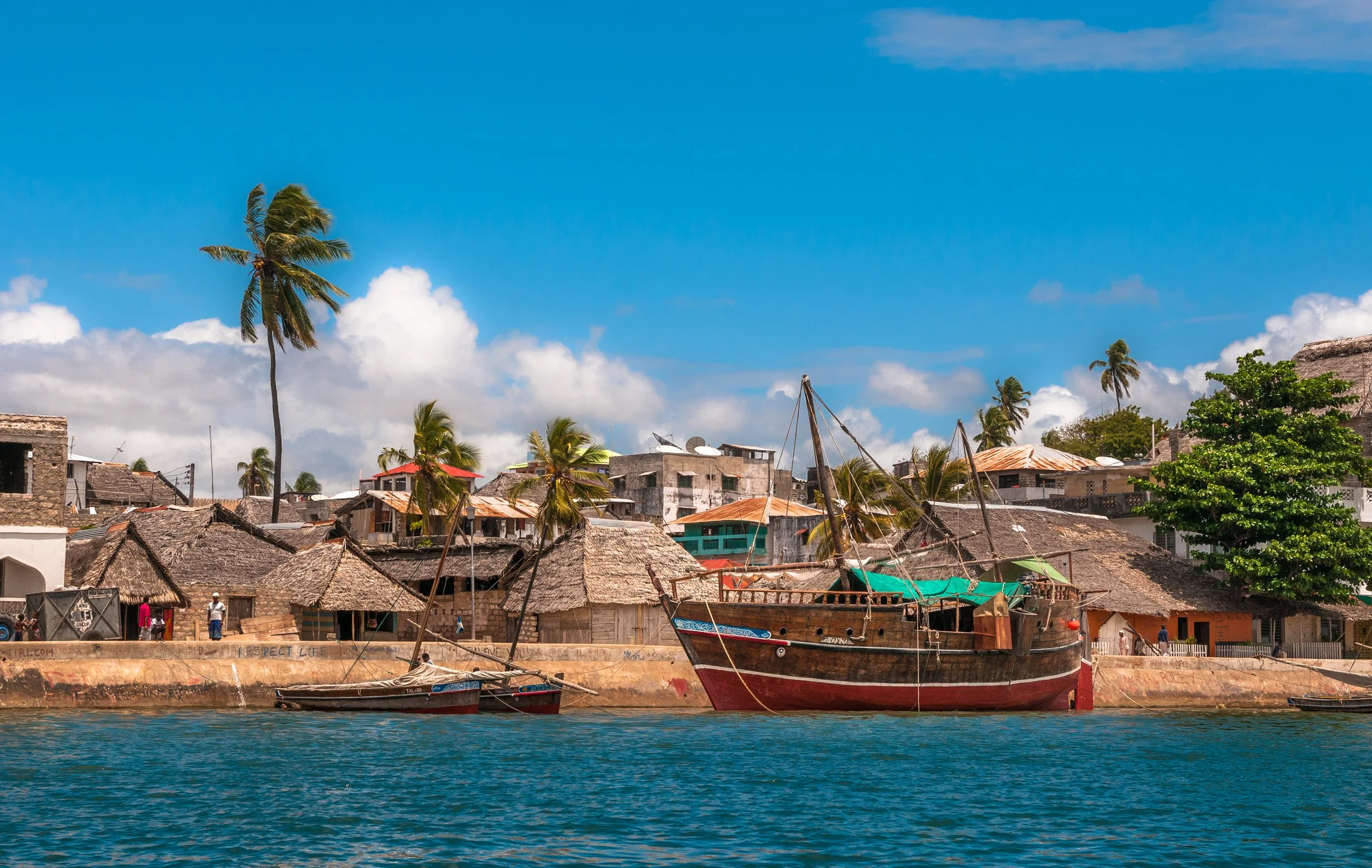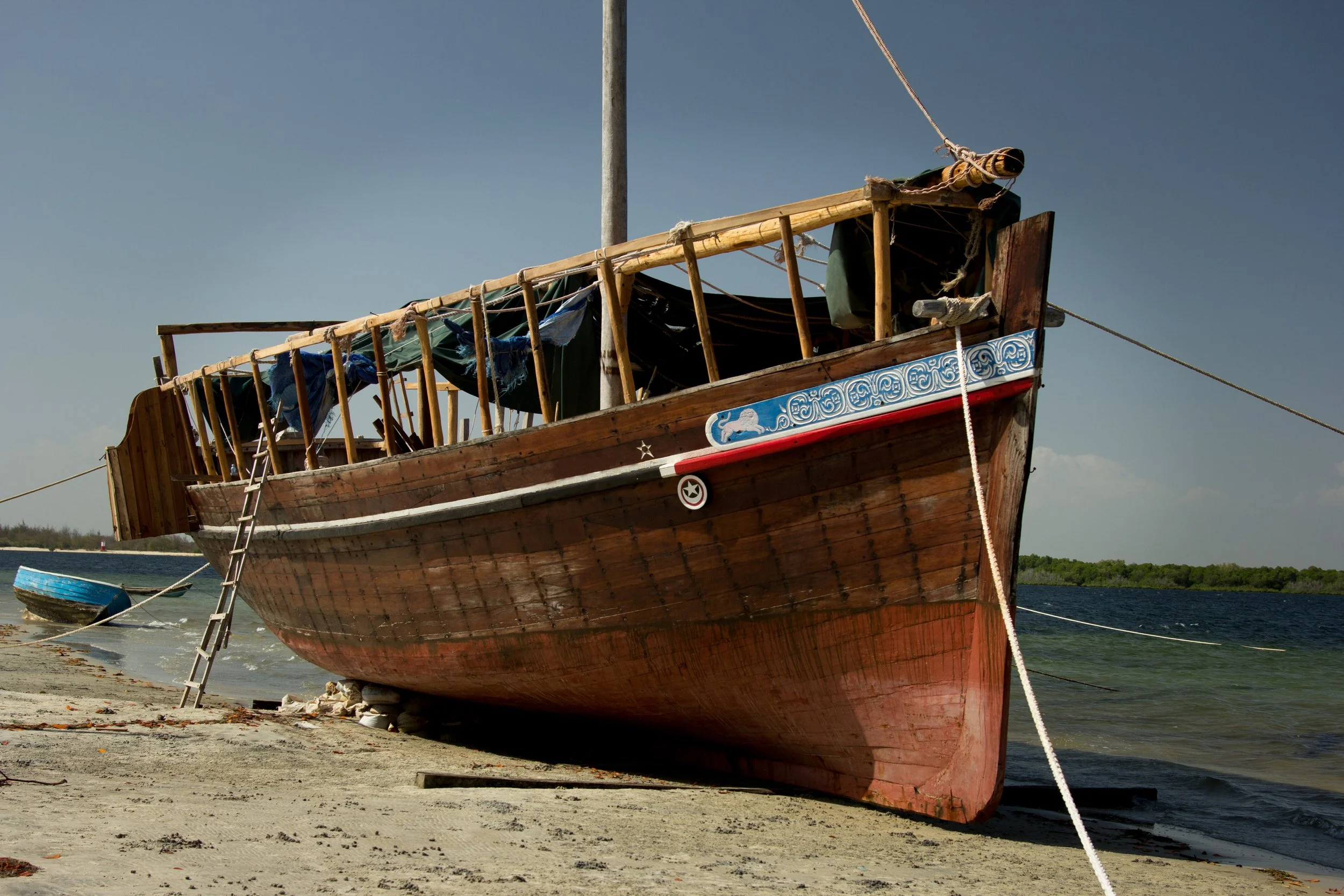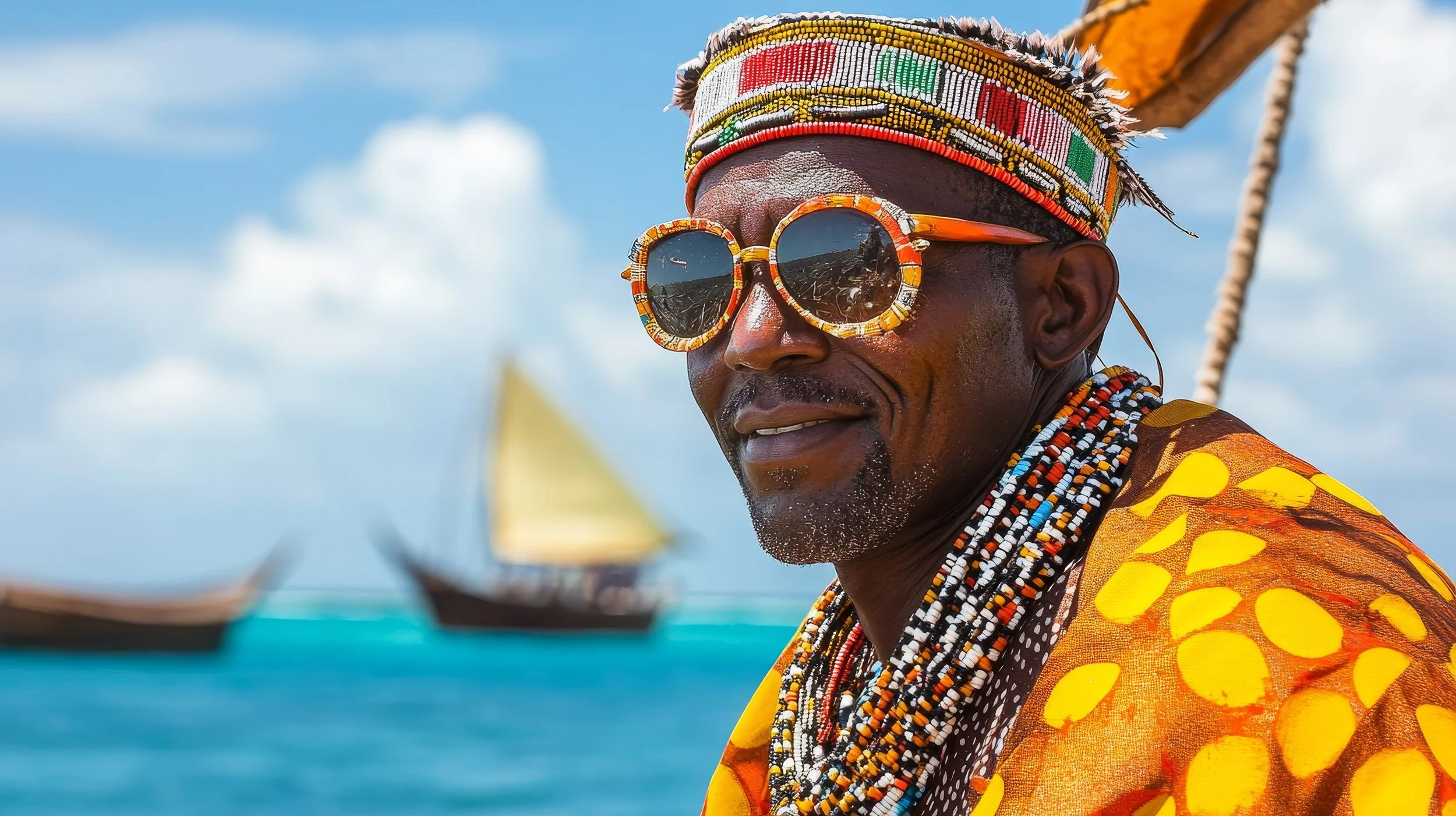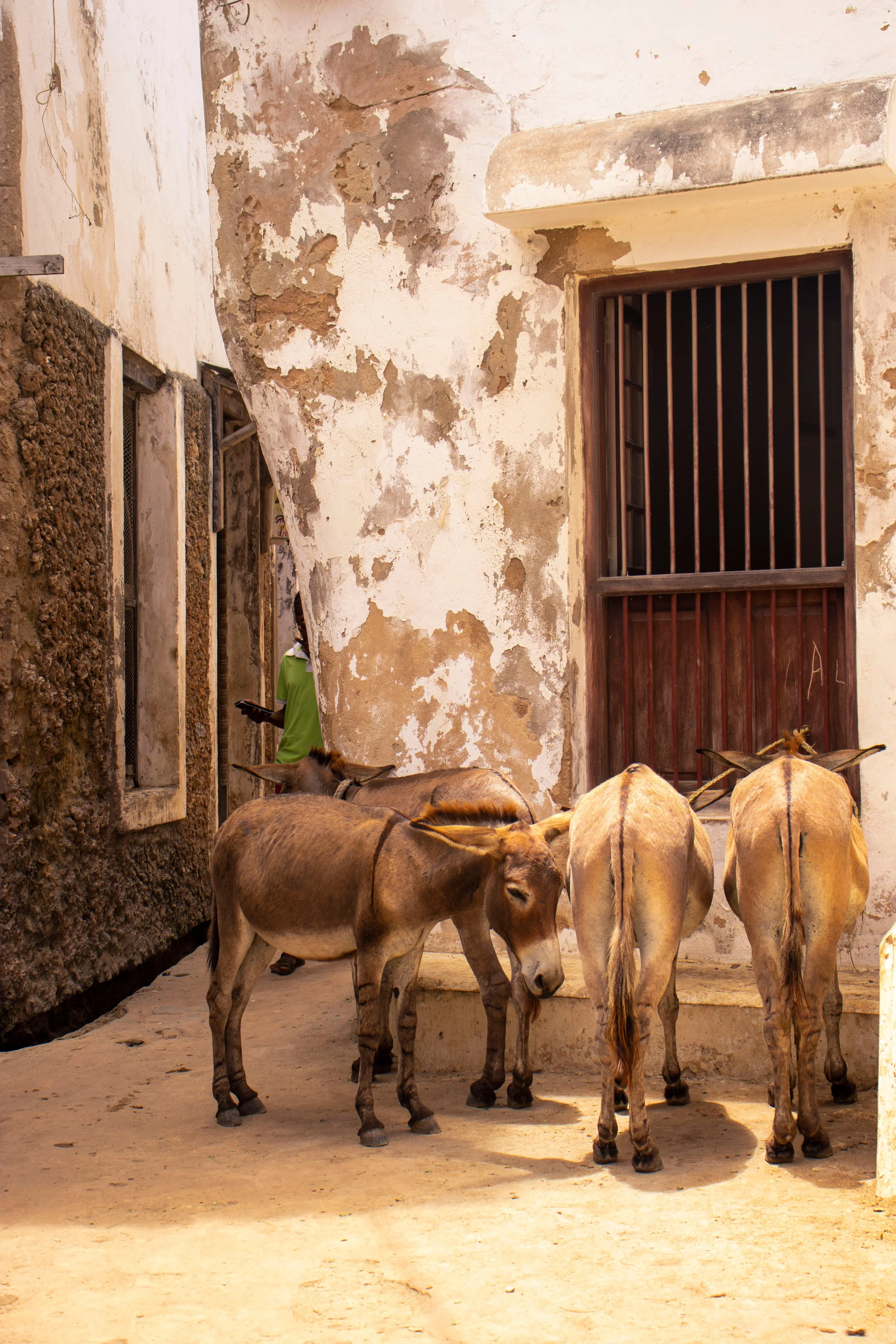Discover Lamu
TIIMELESS BEAUTY, ENDLESS STORIES
Lamu is not a destination: it’s an experience that stays with you.
Where cultures meet and time slows down
Lamu is not just a place to visit: it’s a place to experience. The island breathes history and authenticity, yet carries a timeless energy that invites you to slow down, breathe, and simply be.
Narrow sandy alleys lead you through Shela village past whitewashed coral-stone houses and carved wooden doors, while graceful dhows sail across turquoise waters just as they have for centuries.
What makes Lamu truly unique is the harmony of cultures: Swahili, Arab, Indian, and African influences interwoven in the architecture, the cuisine, and in daily life. Here, simplicity and richness exist side by side: no rush, only the rhythm of the tides; no crowded boulevards, only the soft sound of the wind filling a dhow’s sail. And above all, the warmth of its people, whose smiles make you feel instantly at home.
How to get to Lamu
There are daily flights to Lamu from Nairobi’s Jomo Kenyatta and Wilson airports, as well as from Mombasa, Watamu, and Malindi. Airlines include SafariLink, Skyward Express, and Jambojet. Flights can be booked directly through the airlines’ websites. On arrival, a short boat ride brings you across the channel to Shela, where life instantly shifts to island time.
About the community
Lamu is part of a Muslim community, and a modest dress code is appreciated when you walk through Shela, Lamu Town, or other villages. Covering shoulders and legs is a respectful choice. On the beach, swimwear is fine, and a light kikoy makes it easy to cover up before stepping back into the village.
What to do in Lamu
There’s so much to experience here: wander the old streets of Lamu Town, sail into the sunset on a dhow, snorkel in turquoise waters, or simply spend the afternoon in a shady courtyard with spiced tea.
When you book with us, you’ll receive our personal Lamu guide: carefully selected from our own experiences and local friendships. It’s filled with tips on where to eat, what to see, and how to experience the island like a local. We’re happy to share our connections: from trusted guides and the best dhow captains for sunset sails, to local women who can cook you authentic Swahili meals, and even our fisherman friend Babu who can bring you the freshest catch straight from the ocean (or take you along on a fishing trip 😉).
At Huriya House, you don’t just visit Lamu. You live it.


